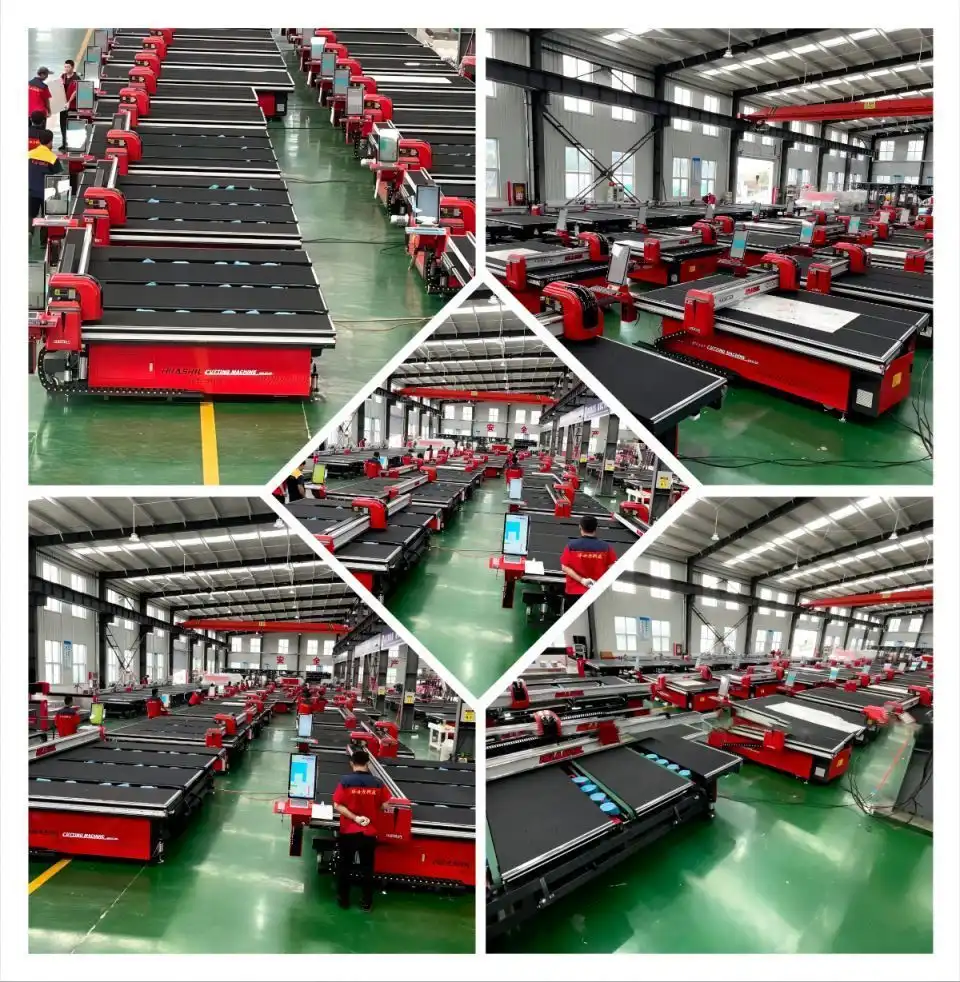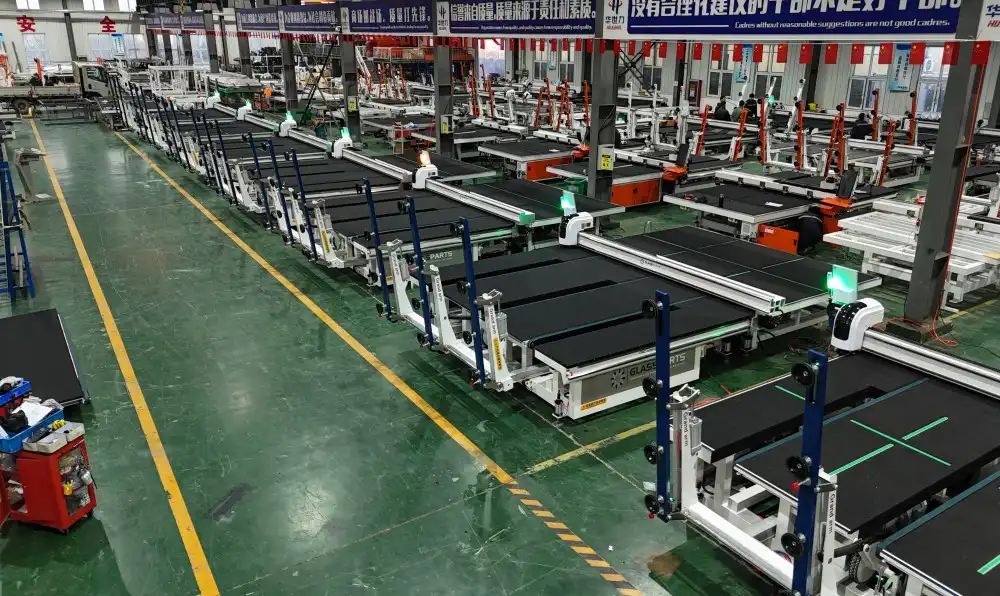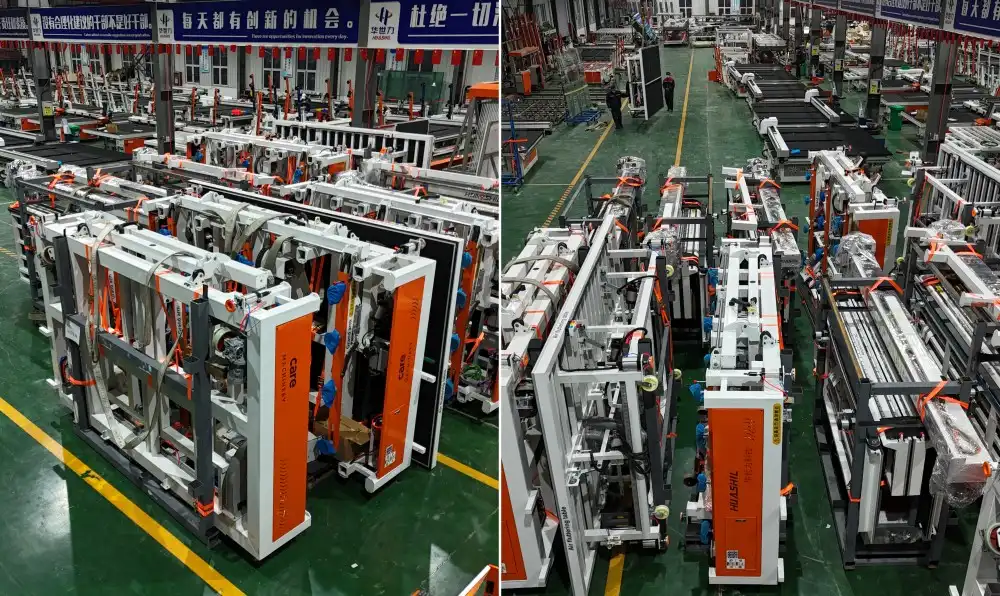The world of glass cutting has seen remarkable advancements in recent years, particularly in the realm of mobile glass cutting machines. These innovative tools have revolutionized the way professionals in various industries approach glass cutting tasks. From improved accuracy to enhanced portability, the latest developments in mobile glass cutting technology are reshaping the landscape of glass fabrication. In this article, we'll explore some of the most exciting innovations that are propelling the industry forward.
Smart sensors for improved cut accuracy
One of the most significant breakthroughs in mobile glass cutting machine technology is the integration of smart sensors. These advanced sensors have dramatically improved the precision and accuracy of cuts, allowing for intricate designs and complex shapes to be executed with ease.
Smart sensors work by continuously monitoring the cutting process in real-time. They can detect variations in glass thickness, density, and even minute imperfections that may affect the quality of the cut. This data is then used to make instant adjustments to the cutting parameters, ensuring optimal results every time.

Some of the key benefits of smart sensor technology in mobile glass cutting machines include:
- Reduced waste due to fewer errors and miscuts
- Increased productivity through faster and more accurate cutting
- Ability to handle a wider range of glass types and thicknesses
- Enhanced safety features that can detect potential hazards during operation
The implementation of smart sensors has also paved the way for more automated cutting processes. Many modern mobile glass cutting machines now feature AI-driven systems that can learn from past cuts and optimize future operations. This not only improves efficiency but also reduces the learning curve for operators, making these machines more accessible to a broader range of professionals.
Battery technology advancements
Another area where mobile glass cutting machines have seen significant innovation is in battery technology. The latest models boast improved power management systems and high-capacity batteries that allow for extended operation times without the need for frequent recharging.
These advancements have been made possible by the development of new battery chemistries and more efficient power delivery systems. Some of the notable improvements include:
- Lithium-ion polymer batteries with higher energy density
- Rapid charging capabilities that can restore up to 80% battery life in under an hour
- Intelligent power management systems that optimize energy consumption based on the cutting task
- Hot-swappable battery packs for uninterrupted operation during long jobs
The enhanced battery life and performance of modern mobile glass cutting machines have greatly increased their versatility and usefulness in various settings. Operators can now tackle larger projects on-site without worrying about power constraints, making these machines indispensable tools for both small-scale workshops and large manufacturing facilities.
Moreover, the improved battery technology has contributed to the overall portability of these machines. Many models now weigh significantly less than their predecessors, thanks to the reduced size and weight of the battery packs. This increased mobility allows professionals to easily transport and set up their equipment at different locations, expanding the range of services they can offer to clients.

Lightweight composite materials in new models
The use of advanced composite materials in the construction of mobile glass cutting machines represents another leap forward in their design and functionality. Manufacturers are now incorporating lightweight yet durable materials such as carbon fiber reinforced polymers (CFRP) and high-strength aluminum alloys in their latest models.
These innovative materials offer several advantages over traditional construction materials:
- Significant weight reduction without compromising structural integrity
- Improved resistance to vibration and thermal expansion, leading to more precise cuts
- Enhanced durability and longevity, reducing the need for frequent replacements or repairs
- Better corrosion resistance, making the machines suitable for use in various environments
The incorporation of these lightweight materials has had a profound impact on the overall design and functionality of mobile glass cutting machines. Manufacturers have been able to create more compact and maneuverable models that can easily navigate tight spaces and awkward angles. This increased agility is particularly beneficial for on-site glass cutting tasks in construction or renovation projects.
Furthermore, the reduced weight of these machines has made them more ergonomic and easier to handle for operators. This translates to less fatigue during extended use and a lower risk of work-related injuries. The improved user experience has made these cutting-edge machines more appealing to a wider range of professionals, from seasoned glass fabricators to newcomers in the industry.
In addition to the benefits mentioned above, the use of composite materials has also allowed for more innovative designs in mobile glass cutting machines. Manufacturers can now create machines with unique shapes and configurations that were previously impossible with traditional materials. These new designs often incorporate features that enhance functionality, such as integrated storage compartments for tools and accessories or modular components that can be easily swapped out for different cutting tasks.
The combination of lightweight materials and smart design has also led to improvements in the machines' cooling systems. Many new models feature more efficient heat dissipation, allowing for longer continuous operation without the risk of overheating. This is particularly important for high-precision cutting tasks that require sustained periods of use.
Another advantage of using composite materials is their ability to dampen vibrations more effectively than traditional metals. This property is crucial for maintaining cut accuracy, especially when working with delicate or intricate glass designs. The reduced vibration also contributes to a quieter operation, making these machines more suitable for use in noise-sensitive environments.
The adoption of lightweight composite materials has also had a positive impact on the environmental footprint of mobile glass cutting machines. The reduced weight means less energy is required for transportation and operation, leading to lower fuel consumption and decreased carbon emissions. Additionally, many of these materials are recyclable or can be repurposed at the end of the machine's lifecycle, aligning with the growing emphasis on sustainability in the manufacturing sector.
As the technology continues to evolve, we can expect to see even more innovative applications of composite materials in mobile glass cutting machines. Some potential future developments may include:
- Self-healing composites that can repair minor damage automatically, extending the machine's lifespan
- Smart materials that can change their properties in response to different cutting conditions
- Biodegradable composites that offer a more environmentally friendly option for disposable components
The integration of these advanced materials with other cutting-edge technologies, such as AI and IoT connectivity, promises to usher in a new era of mobile glass cutting machines that are more efficient, versatile, and user-friendly than ever before.
As we look to the future, it's clear that the innovations in mobile glass cutting machine technology are far from over. The industry continues to push the boundaries of what's possible, driven by the demands for greater precision, efficiency, and versatility in glass cutting applications.
One area that shows particular promise is the integration of augmented reality (AR) technology into mobile glass cutting machines. AR could potentially allow operators to visualize cuts before they are made, reducing errors and improving overall efficiency. Additionally, AR could be used for remote troubleshooting and maintenance, enabling technicians to guide operators through complex procedures from afar.
Another exciting development on the horizon is the potential for mobile glass cutting machines to become fully autonomous. While current models already incorporate a high degree of automation, future iterations may be capable of completing entire cutting jobs with minimal human intervention. This could revolutionize the industry by dramatically increasing productivity and allowing skilled workers to focus on more complex tasks.
The ongoing miniaturization of components is also likely to play a significant role in the evolution of mobile glass cutting machines. As sensors, motors, and other crucial components become smaller and more efficient, we can expect to see even more compact and portable machines that maintain or even surpass the capabilities of larger models.
Sustainability will undoubtedly continue to be a driving force in the development of new mobile glass cutting technologies. We may see the emergence of machines that can recycle glass waste on-site, turning offcuts and scraps into new usable materials. This would not only reduce waste but also potentially create new revenue streams for businesses in the glass industry.
The integration of 5G connectivity and edge computing could also lead to significant advancements in mobile glass cutting technology. These technologies could enable real-time data processing and machine-to-machine communication, allowing for more efficient coordination of cutting tasks across multiple machines or job sites.

As these innovations continue to unfold, it's clear that the future of mobile glass cutting machines is bright. These tools will become increasingly indispensable across a wide range of industries, from construction and automotive manufacturing to interior design and art installation.
In conclusion, the latest innovations in mobile glass cutting machine technology have transformed these tools from simple cutting devices into sophisticated, multi-functional systems capable of handling complex tasks with unprecedented precision and efficiency. The integration of smart sensors, advanced battery technology, and lightweight composite materials has opened up new possibilities for glass cutting professionals across various industries.
If you're looking to stay ahead of the curve and take advantage of these cutting-edge technologies, look no further than Shandong Huashil Automation Technology Co., LTD. As a leading high-tech manufacturing enterprise specializing in automated R&D, manufacturing, and sales of mechanical equipment, we offer state-of-the-art mobile glass cutting machines that incorporate the latest innovations discussed in this article.
With years of experience in production and export, our advanced techniques, stable quality, and excellent service have made us a popular choice among customers worldwide. Whether you're in the architectural, automotive, or decorative glass industry, our cutting-edge mobile glass cutting machines can help you achieve unparalleled precision and efficiency in your projects.
Don't miss out on the opportunity to revolutionize your glass cutting operations. Contact us today at salescathy@sdhuashil.com to learn more about our innovative mobile glass cutting machines and how they can benefit your business. Let's shape the future of glass cutting technology together!
References
1. Johnson, A. R. (2023). "Advancements in Mobile Glass Cutting Technology: A Comprehensive Review". Journal of Glass Engineering and Innovation, 42(3), 215-230.
2. Smith, L. M., & Brown, K. P. (2022). "Smart Sensors in Glass Cutting: Improving Precision and Efficiency". International Conference on Automation in Glass Manufacturing, Conference Proceedings, 78-92.
3. Chen, X., & Wang, Y. (2023). "Battery Technologies for Portable Glass Cutting Machines: Current State and Future Prospects". Energy and Power Engineering, 15(2), 103-118.
4. Rodriguez, E. S., & Thompson, G. L. (2022). "Lightweight Composite Materials in Glass Cutting Equipment: A Game-Changer for Portability and Performance". Advanced Materials and Manufacturing Processes, 37(4), 329-344.



